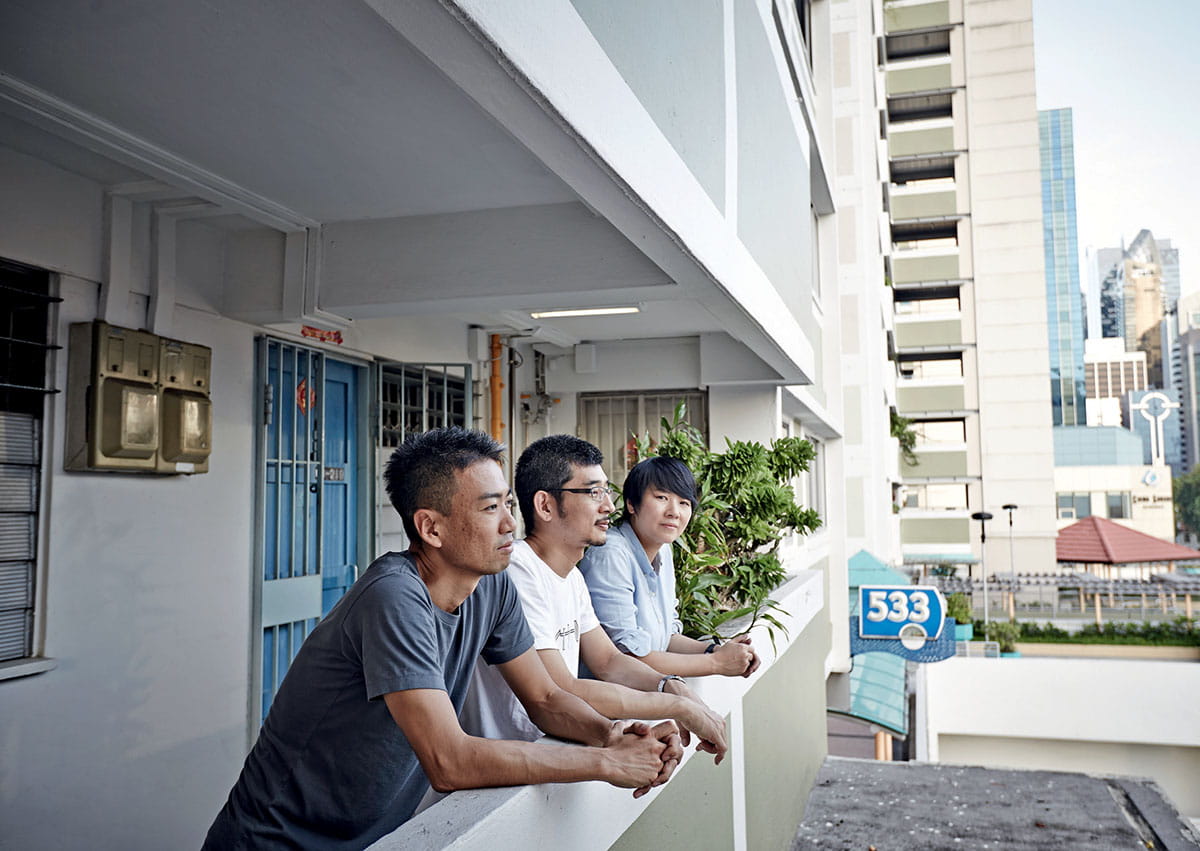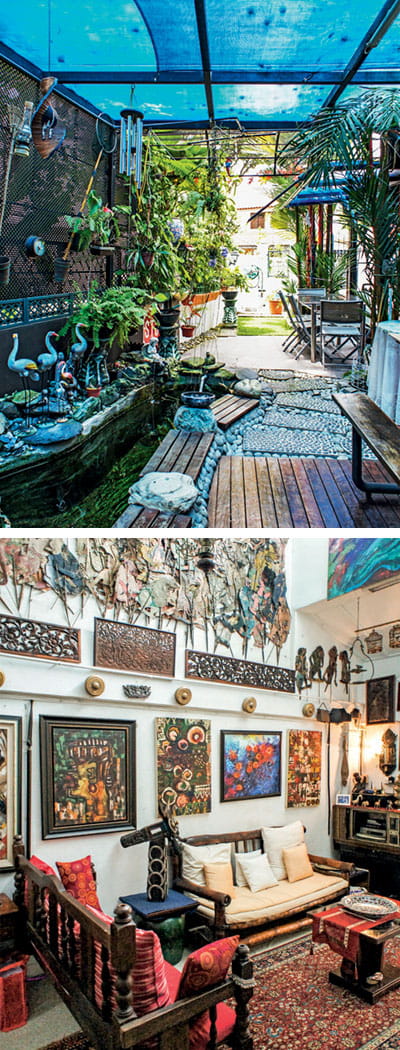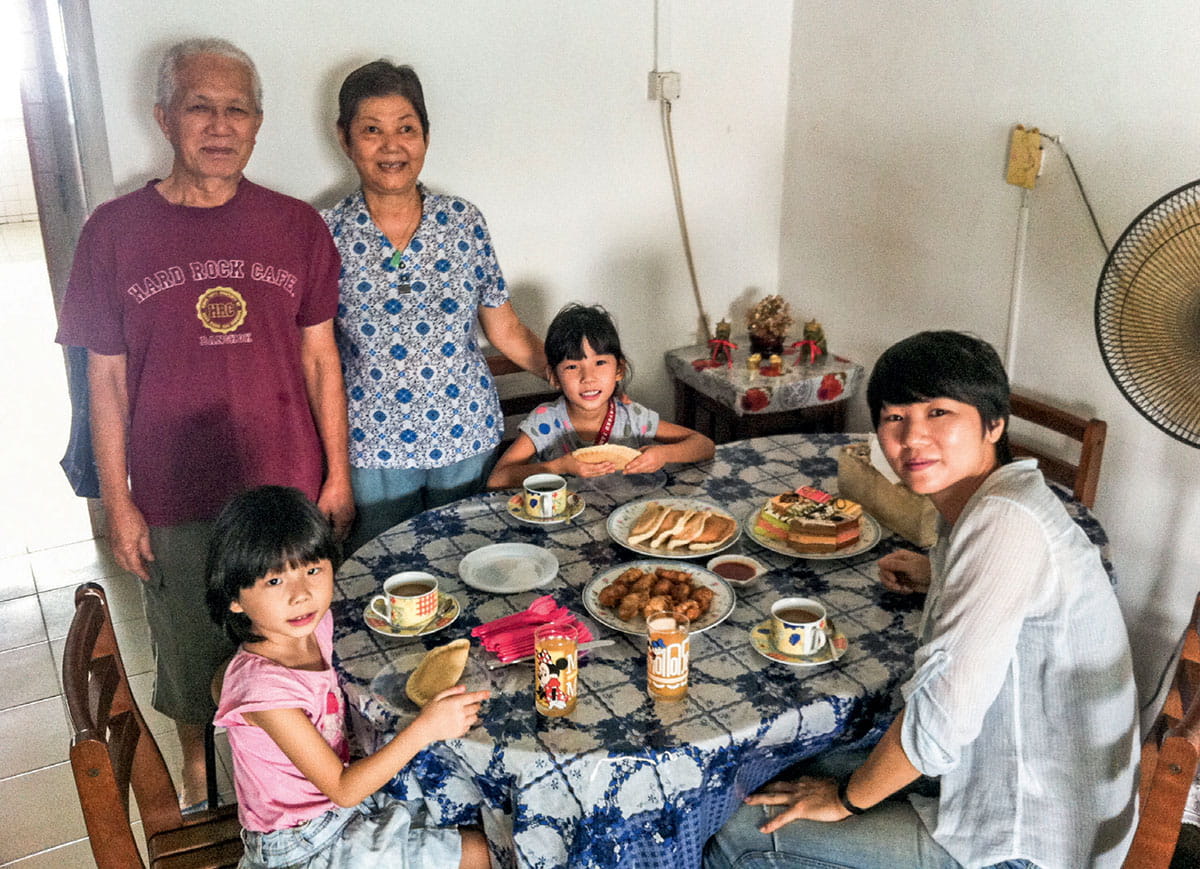Stories > Singapore’s Heart and Soul Through Japanese Eyes
Singapore’s Heart and Soul Through Japanese Eyes
Three people from Japan who were intrigued by the charm and character of public housing units in Singapore have immortalised their perspectives in a photo book.
BY WONG SHER MAINE
PHOTOS JUSTIN LOH, TOMOHISA MIYAUCHI

Tomohisa Miyauchi, Eitaro Ogawa and Tamae Iwasaki spent three years photographing over 100 HDB fl ats for their book HDB: Homes Of Singapore.
rtists Eitaro Ogawa and his wife, Tamae Iwasaki, had been renting a house at Seletar Airbase, a former British military airbase in Singapore’s northeast, for five years. They enjoyed living in the sprawling estate, surrounded by nature.
But, in 2009, the land was slated for development. The couple, who had moved from Japan in 2001 to work at the Singapore Tyler Print Institute (STPI),a creative workshop and contemporary art gallery, had no choice but to look for a new home.
They were initially reluctant about moving into an HDB flat (public housing in Singapore) as they were afraid that it would be rigid and soulless. That all changed when they stepped into a friend’s newly renovated flat, featuring cement floors, an art space and windows overlooking greenery. Says Ogawa, 43, STPI’s chief printer: “Every single corner was an eye-opener for us.” Inspired, they bought a four-room flat in Bukit Panjang in the west of Singapore and turned it into their dream home. Struck by how Singapore’s public flats were a unique reflection of different personalities and cultures, they decided to photograph HDB flat interiors for a book project.
 |
|
The interiors of the HDB flats reflected the personalities and cultures of the owners. |
More than a showcase of beautiful home interiors, the trio wanted to tell the story of Singapore’s heart and soul through the way in which its inhabitants live. Says Ogawa: “We wanted to show the creativity and diversity of each HDB flat, and how that reflects Singapore’s diversity in culture and background.”
Iwasaki, 43, a senior education officer at STPI, says that the book gives Singaporeans a chance to look differently at the familiar, to see things they may have otherwise overlooked, as the photographs allow them to look in greater detail at people’s flats. The book also offers foreigners a different perspective of life in Singapore. “They can look into the real lives of Singaporeans, apart from iconic symbols like the Merlion, Marina Bay Sands and Sentosa,” says Ogawa.
OPENING DOORS
Most of the flats they visited belonged to friends of friends or neighbours of friends, but about 10 per cent were the homes of complete strangers who welcomed them after the trio knocked on their doors and explained their purpose. Sometimes, their children – four from Miyauchi and two from Ogawa and Iwasaki – would tag along.
 |
|
Some flat owners even treated Tamae Iwasaki and her two children to drinks and snacks during their visits. |
Unlike most architectural books or home interior magazines, the rooms showcased are not sleek and polished. What caught their eyes were things that capture an authentic slice of life, such as an entire wall of plastic toys arranged neatly on a metal rack in the home of an editor.
For Miyauchi, the experience was akin to receiving a welcome hug from Singaporeans who let him photograph their homes. Some even brought him to hawker centres (open-air food courts) nearby to share their favourite food.
“Over and over again, we saw peopleʼs connection, closeness and support for each other... In Japan, this is very rare because our concern is not to disturb people. But we realised after a while that here, people accept each otherʼs way of living. Many people used to tell us that HDB communities were getting colder, but we strongly feel that there is still a strong sense of social cohesion here.”
Tamae Iwasaki, senior education officer at Singapore Tyler Print Institute
He says: “As I had recently arrived from Japan in 2013, I felt that this was equivalent to warm acceptance by the society of Singapore, which was then a foreign culture to me. It was an enormous source of encouragement while I was adjusting to life here.”
All three were struck by how people willingly opened up their homes. Says Iwasaki: “Over and over again, we saw people’s connection, closeness and support for each other. There was a flat owner who would discuss and coordinate his Chinese New Year decorations with four other neighbours. Their doors were always open and they walked into each other’s homes freely. “In Japan, this is very rare because our concern is not to disturb people. But we realised after a while that here, people accept each other’s way of living. Many people used to tell us that HDB communities were getting colder, but we strongly feel that there is still a strong sense of social cohesion here.”
